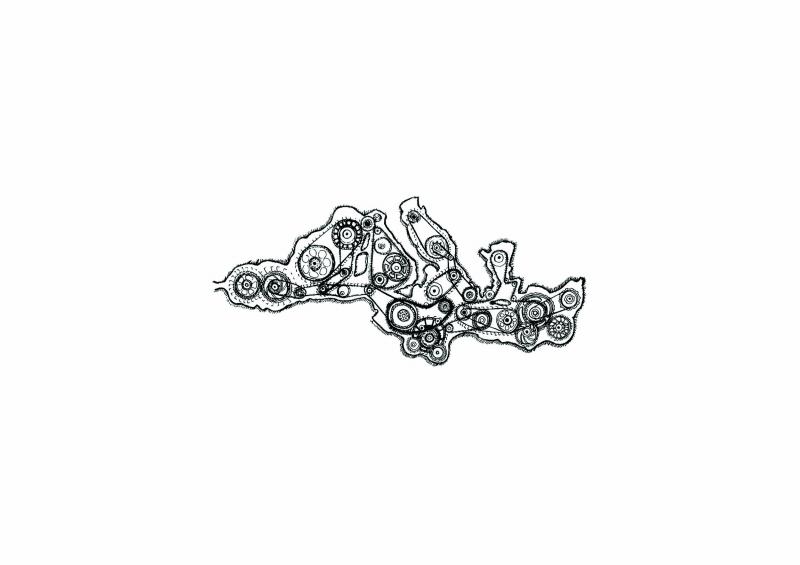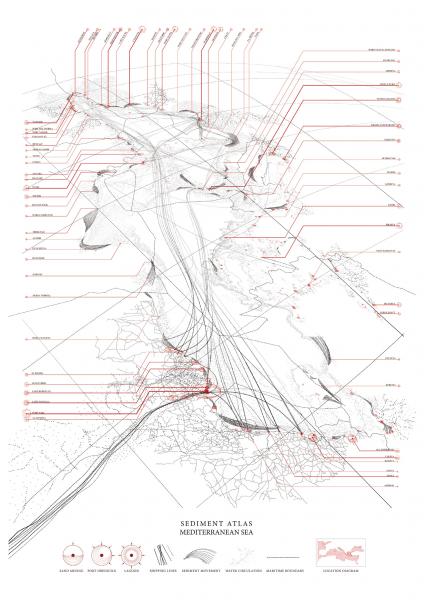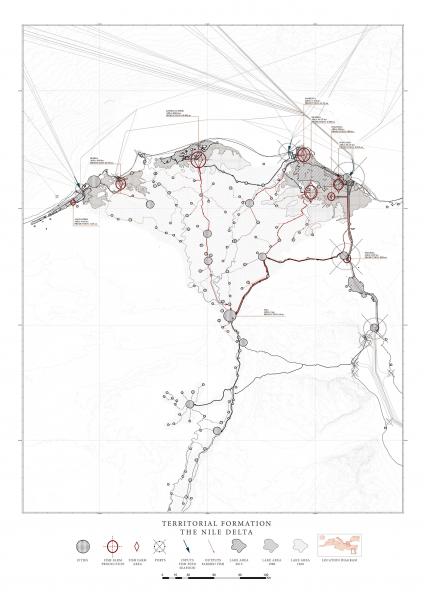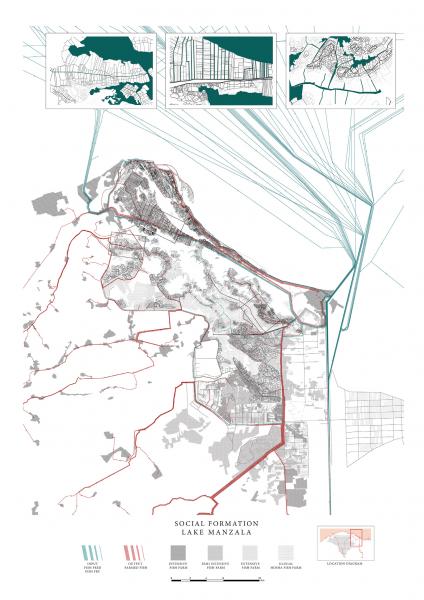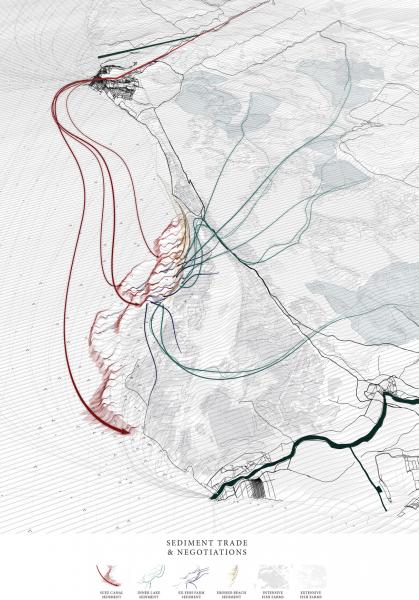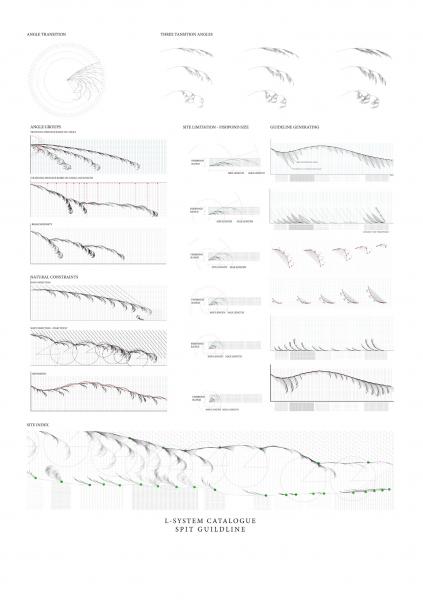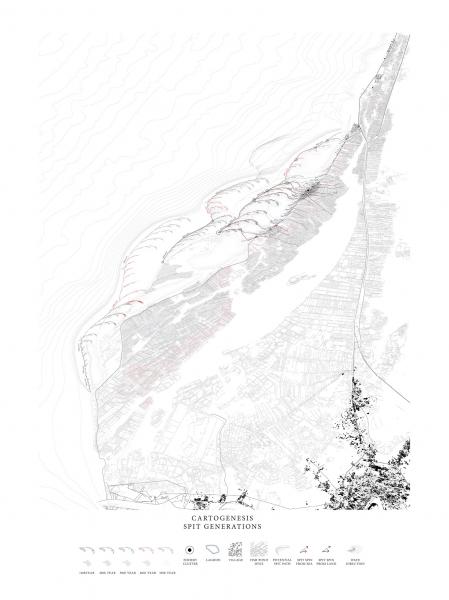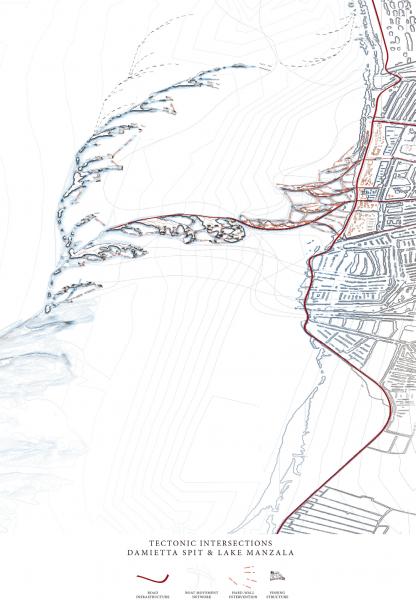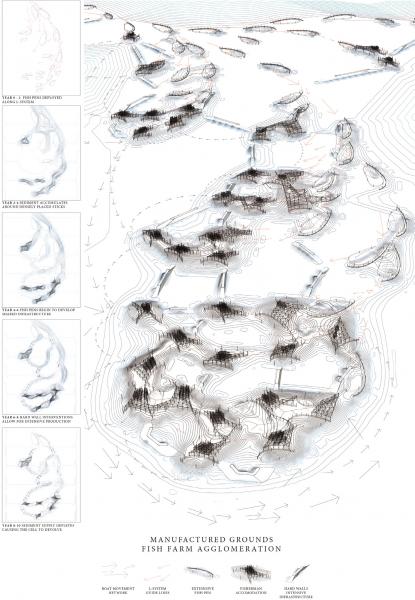Sediment trade and Negotiations
Having identified this global process of sediment shifting around the world, and also in the Mediterranean, we have formulated a strategy for sediment distribution at the scale of Lake Manzala.
Our proposal is perhaps one scenario of how the different groups might negotiate with each other to provoke the coastal spit as an engine for sediment movement from which to expand the existing fish farming industry.
This is part of a general transitioning of the industry within the Lake, moving away from the polluted waters of the interior towards the cleaner brackish water of the spit.
The initiator for this spit reclamation might be the sediment dredged from the Suez Canal, which the government would deposit at the base of the spit with the intention of creating a cheap source of coastal defence to protect the fish farming industry which exists there.
In addition we recognize the conflicted relationship between the local government and the illegal fish farmers in the lake interior, and we are suggesting that those groups could move their extensive stick and net infrastructure in to the oncoming spit as a way of guiding and controlling its formation over time.
This would be complimented by the other mixing of different supplies of sediment, from eroded beaches, and other farmers who wish to migrate towards to coast and bring with them their sediment.
We see this as a negotiation between the interests of the top down government with that of the emergent qualities of the small scale farmers.


